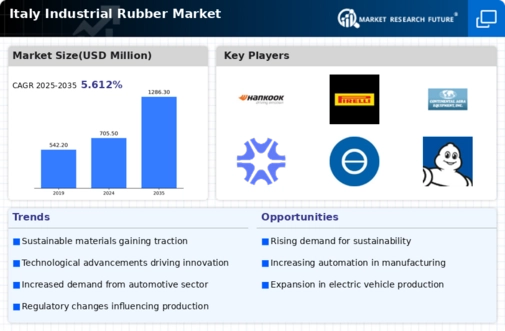The is characterized by its dynamic landscape, marked by a blend of established players and emerging companies vying for market share. The region's demand for industrial rubber products is driven by various sectors, including automotive, construction, and manufacturing, which necessitate innovations that cater to enhanced performance and sustainability. The competition within this market hinges on technological advancements, product differentiation, and the ability to respond swiftly to evolving consumer preferences, creating a scenario where companies must capitalize on their strengths to maintain a competitive edge.
Analyzing the competitive insights offers a glimpse into the market's trajectory, highlighting how different companies are positioning themselves to capture growth opportunities in this vital sector.Hankook Tire has established a significant presence in the , owing to its strong reputation for quality and performance. The company excels in providing a range of tire solutions that cater to both passenger and commercial vehicles, emphasizing innovation and technological improvements. Hankook Tire's strengths lie in its robust research and development capabilities, enabling it to introduce state-of-the-art products that align with market trends towards sustainability and efficiency.
Furthermore, its extensive distribution network in Italy ensures that the company can efficiently deliver its products across various regions, enhancing customer accessibility and satisfaction. The brand's focus on performance and reliability continues to resonate with consumers, positioning it favorably in this competitive market.Pirelli, a renowned leader in the tire manufacturing sector, boasts a strong foothold in the with a rich heritage deeply rooted in the region. The company specializes in high-performance tires, catering to the premium and luxury vehicle segments, which bolsters its market presence.
Pirelli's key products include tires designed for passenger cars, motorcycles, and industrial applications, with a notable emphasis on sustainability and innovation in product design. Strengths such as advanced technological capabilities, a commitment to high-quality standards, and strategic partnerships have fortified its position within the market. Additionally, Pirelli has engaged in mergers and acquisitions to streamline operations and enhance product offerings, further solidifying its competitive stance in Italy. Through its continuous focus on quality and performance, Pirelli remains a pivotal player in shaping the landscape of the industrial rubber sector in the region.

















Leave a Comment